Cape Verde’s ‘fish detectives’ try to keep extinction at bay
As boats from bigger islands flock to fish off Maio, locals take turns to safeguard their pristine waters
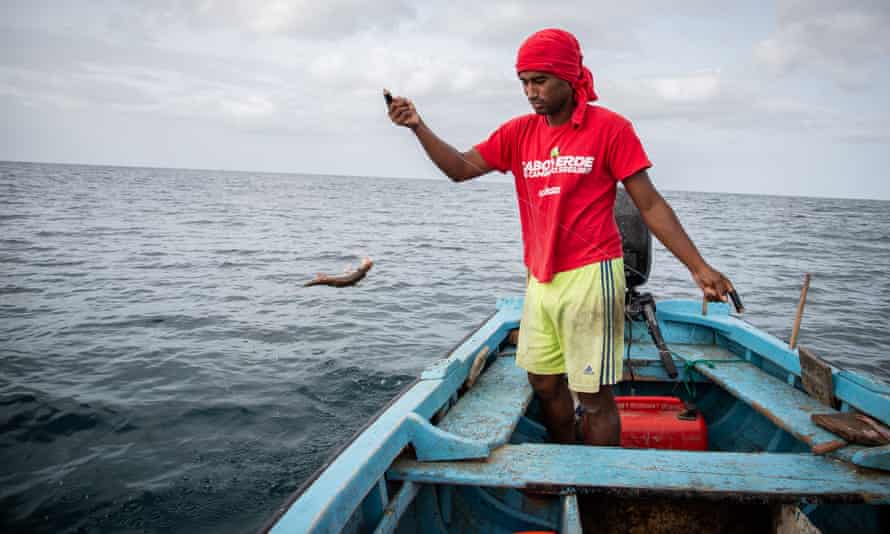
Last modified on Tue 21 Sep 2021 12.59 EDT
Older fishermen such as Boaventura Martins, 60, have noticed the fish have not only become more scarce, but smaller. Some species have disappeared, he says.
On a good day, Martins will catch 10kg (22lb) of fish, which is barely enough to cover his fuel costs. When he began fishing 40 years ago, he would bring home hundreds of kilos – enough to give away part of his catch to his community on the island of Maio in the Cape Verde archipelago, off the west African coast. He would throw back the small fish.
Back then there were no scuba divers or semi-industrial boats, he says. Now he sees divers every day, and the lights from the big boats shine through his window almost every night.
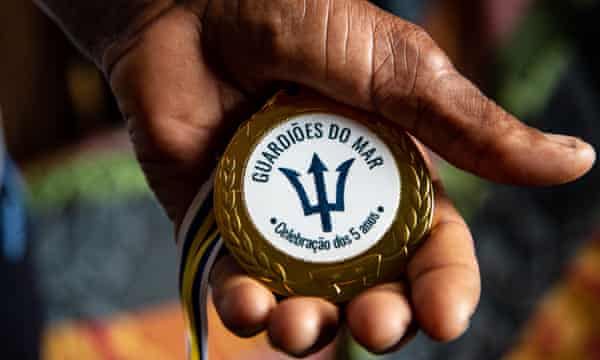
In 2016 he was among the first to join the inaugural group of the Guardians of the Sea. Now there are 20 Guardians, artisanal fishermen monitoring illegal fishing activity along the coastline of Maio, one of the 10 islands that make up Cape Verde.
“Even if I don’t feel like fishing, I will still go out to do my work as a Guardian,” he says. “Because if we keep going at this rate, eventually we will run out of fish.”
Semi-industrial boats appear along Maio’s shores periodically and stay for weeks at a time. At first, the Guardians took pictures, but this often led to heated confrontations. Now, they record what they see with pen and paper. Sometimes, their presence alone acts as a deterrent.
The group was formed by a local organisation, the Maio Biodiversity Foundation. When a fisherman spots illegal activity, he records the details, which are added to a database and shared with the authorities. They also track wildlife sightings to help the foundation monitor populations of whales, dolphins and turtles.
One of the Guardians, Carlitos Fernandes, sinks the anchor of his battered wooden boat into the cobalt depths and casts his lines. All the time, he watches the horizon for illegal fishing vessels.
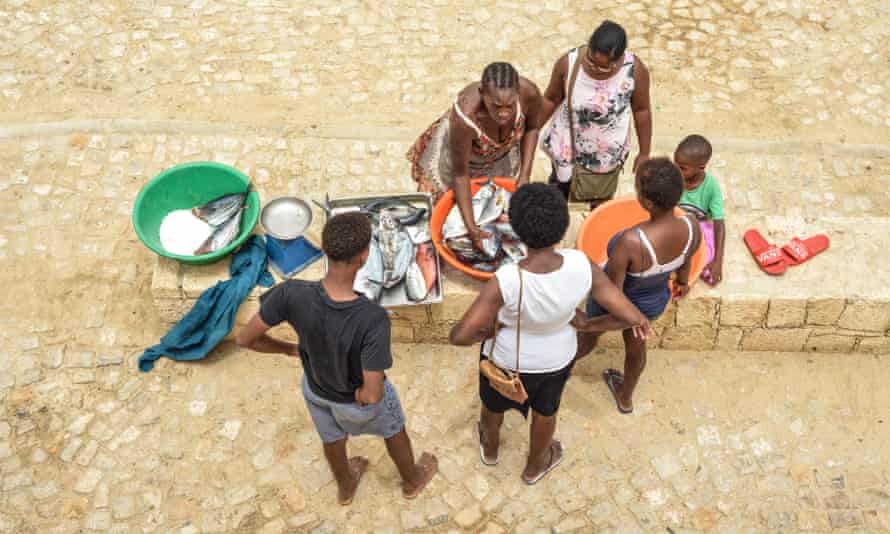
Fernandes, 37, does not see any illegal boats, but he notes down visits from four turtles and a pod of dolphins.
Cape Verde is a biodiversity hotspot, boasting 17 species of whale and dolphin, 60 species of shark and ray, and five species of sea turtle. Yet just 1% of the archipelago’s marine area is protected.
Typical infractions recorded by the Guardians include scuba divers fishing with tanks and capturing protected species such as hammerhead sharks and turtles. One of the most common violations is semi-industrial boats fishing within three nautical miles of the coastline – a zone reserved for artisanal fishermen.
The boats typically come from the main island of Santiago, where conservationists say overfishing is rampant. The neighbouring island to Maio, Santiago is home to about 300,000 Cape Verdeans and the location of Cape Verde’s capital, Praia.
By contrast, Maio, with a population of roughly 7,000, is one of Cape Verde’s least developed islands – its long stretches of white sand beaches and turquoise sea are mostly deserted, save for the thousands of sea turtles that visit each summer to nest. In 2020 it was designated a Unesco Biosphere Reserve.
But the unspoiled coastline and healthy ecosystems are precisely what attract fishermen from more populous islands. Maio’s artisanal fishermen fear that it may only be a matter of time before their traditional fishing grounds begin to resemble those of Santiago. Each year, Maio’s fishermen say they work longer and travel farther, but still catch fewer and fewer fish.
“I’m more tired and more stressed,” says Fernandes, who just three years ago would typically work from 4-9am and return with three big buckets of fish. Now he often stays out until 1pm, spends more money on fuel in search of fish, and is lucky if he fills one bucket. “Sometimes I don’t catch anything.”
Before he became a Guardian, his brother, Filipovic Fernandes, says he used to see other fishermen catch sea turtles nearly every day. “Now, if there’s a Guardian around, they won’t catch them,” he says.
The Guardians have recorded more than 240 infractions over the past four years. The data is especially valuable in Maio, which has just one fisheries inspector to monitor 50 miles (80km) of coastline.

But enforcement is rare – not only must the fisheries inspector be available, but he must be accompanied by the police, who are spread thin.
“We can’t be everywhere on the island. It’s too hard to cover,” says one Maio police officer, who spoke anonymously as he is not permitted to speak to the media. “The information helps us learn which type of illegal activity is happening, where and how often.”
When enforcement does occur, violators are usually fined. In the most severe cases their equipment is confiscated. No one has ever gone to prison, says Sara Ratao, the foundation’s marine programme coordinator.
“The Guardians see these violations happening every day and they feel like nothing is being done,” she says.
The same boats from Santiago that have been recorded fishing illegally in Maio have also been spotted about 120 miles away around the island of Sal. Headed by the local conservation organisation Project Biodiversity, the island began its own programme in 2020 and now boasts 40 Guardians of the Sea, though Sal also has just one fisheries inspector. The neighbouring island of Boa Vista is building a third group of Guardians.
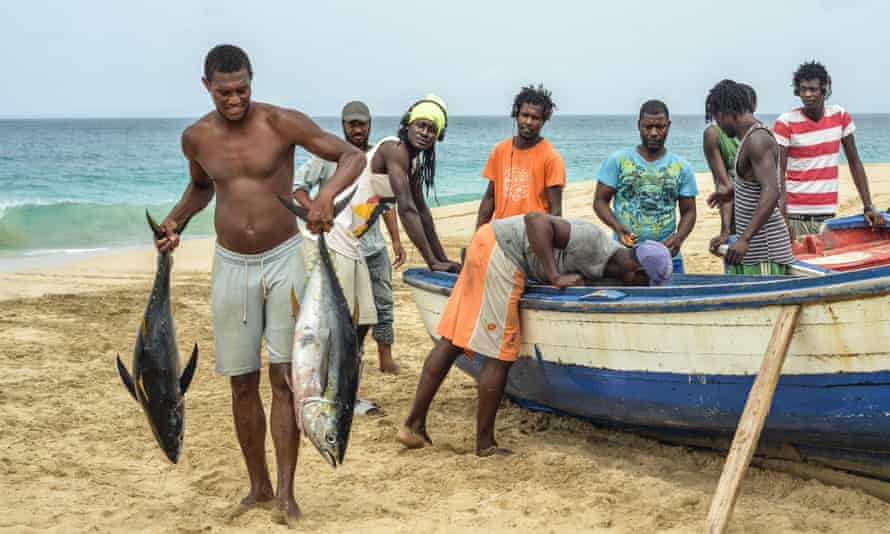
“Now we know what infractions are taking place and where. We know who is committing them,” says Berta Renom, the project’s executive director. “There are no more excuses from the authorities.”
Renom says the project sent officials three data reports over the past year, but they have yet to get a response. The authorities initially expressed interest in collaborating, but efforts stalled amid elections and the onset of the pandemic.
“When they don’t take action, it’s the fishermen who suffer the consequences,” she says.
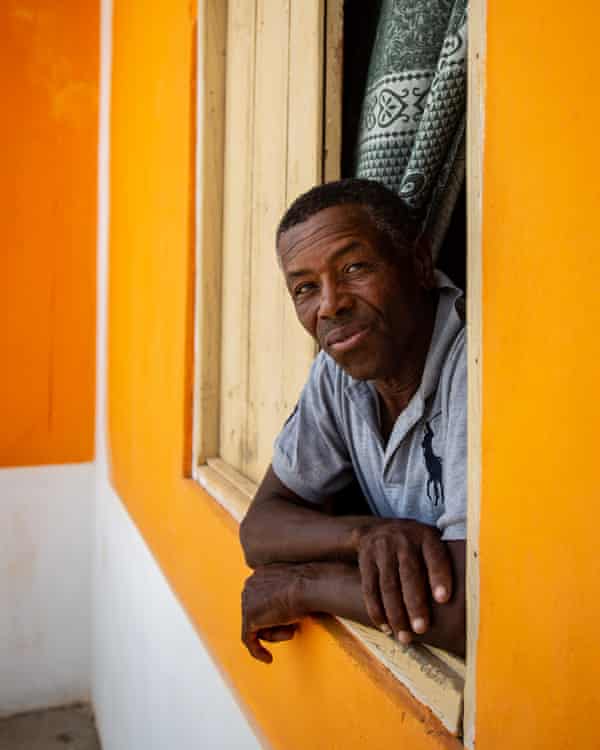
Ratao says she hopes the data will encourage officials to allocate more resources to fish inspection. She wants to establish a nationwide programme but worries the government has different priorities.
This year, Cape Verde legalised the use of diving tanks for fishing and approved the construction of a EUR500m (GBP425m) development project on Maio. The Little Africa complex will include a tourist resort, casino, luxury condominiums and a business centre.
“This is on an island where there’s already barely enough water to sustain the current population,” Ratao says.
Maio’s reputation as a “virgin paradise” for those who seek “nature in its pure state” – as described on Cape Verde’s tourism website – may soon be a relic of the past. Cape Verde has also continued to issue fishing permits to commercial European and Asian fishing vessels in exchange for millions of pounds in fees.
The most recent contract with the EU grants fishing rights to 69 vessels from Spain, Portugal and France. About EUR250,000 (GBP213,000) a year is supposed to be allocated toward “the sustainable management of fisheries in Cape Verde, including reinforcement of control and surveillance capacities, and to support the local fishing communities”.
But for line-and-hook fishermen such as Fernandes, who are trying to preserve fish populations, it often feels like the government is working against them.
He glances at the 4.5kg of fish he has caught. It’s a fraction of what he used to bring in just three years ago.
“I don’t know if there will be fish in the future,” he says. “If we destroy nature, eventually we will destroy ourselves.”
